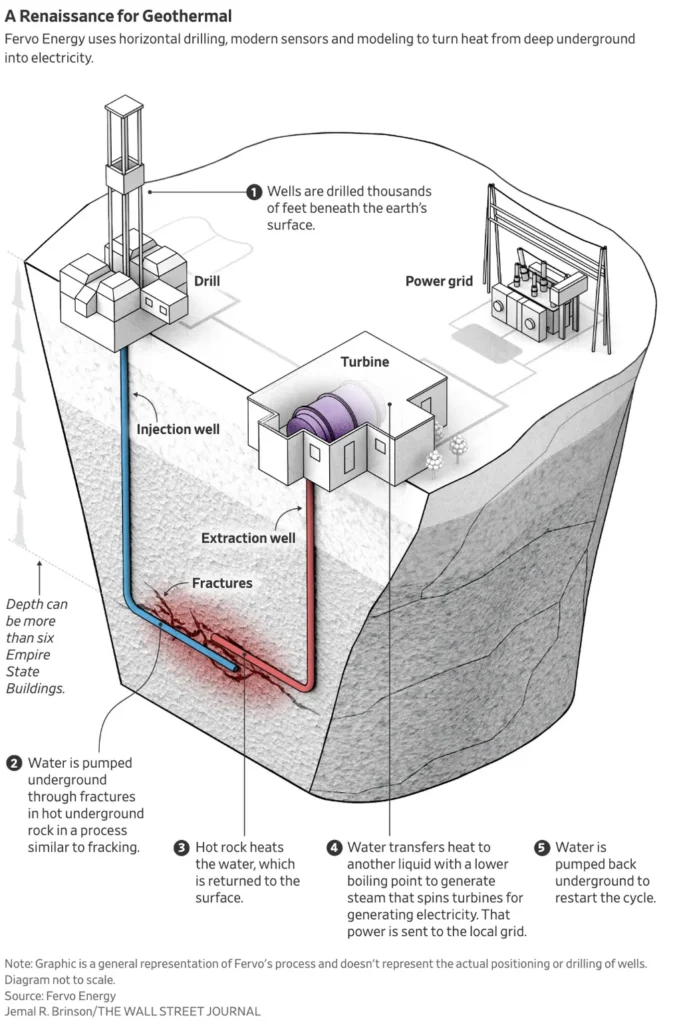In a significant stride towards sustainable energy solutions, researchers have unveiled a groundbreaking method for enhancing geothermal energy extraction, potentially reshaping the energy sector’s landscape. This innovative approach, termed thermochemical fracturing, offers a more efficient and environmentally friendly alternative to conventional hydraulic fracturing techniques used in enhanced geothermal systems (EGS).
The study, led by Ahmed Al-Ghamdi from the Department of Petroleum Engineering at King Fahd University of Petroleum & Minerals in Saudi Arabia, introduces a novel thermochemical stimulation method that promises to overcome the limitations of traditional EGS stimulation. Published in the journal ‘Petroleum’ (translated to English), the research demonstrates a remarkable improvement in permeability and heat transfer in carbonate rock samples, paving the way for more effective geothermal energy extraction.
Conventional EGS stimulation methods, such as hydraulic fracturing, often face challenges like high operational costs, substantial water consumption, and potential environmental impacts. The new thermochemical fracturing technique addresses these issues by utilizing an in-situ exothermic reaction between sodium nitrite (NaNO2) and ammonium chloride (NH4Cl). This reaction generates high-pressure nitrogen gas pulses, creating an extensive micro-fracture network within the rock.
“The thermochemical stimulation increased permeability by 109% and enhanced heat transfer by 530%,” Al-Ghamdi explained. “This was achieved with only a 3.3% increase in porosity, indicating preserved rock integrity.” The exothermic reaction also prevents core cooling during stimulation, avoiding thermal shock and ensuring the efficiency of the process.
One of the most compelling aspects of this new method is its environmental friendliness. The thermochemical stimulation primarily generates nitrogen gas (N2) and a brine solution as byproducts. The generated N2 offers the additional benefit of providing well lifting energy, simplifying flowback operations and reducing the overall environmental footprint.
The implications of this research for the energy sector are profound. By enhancing the efficiency and sustainability of geothermal energy extraction, this novel method could accelerate the adoption of geothermal power as a viable and renewable energy source. This, in turn, could reduce dependence on fossil fuels and contribute to global efforts to combat climate change.
As the world seeks innovative solutions to meet its energy needs sustainably, the thermochemical fracturing technique offers a promising path forward. By addressing the limitations of conventional EGS stimulation methods, this research not only advances the field of geothermal energy but also opens new avenues for exploration and development in the broader energy sector.
The study’s findings highlight the potential for thermochemical fracturing to become a standard practice in geothermal energy extraction, offering a more efficient, cost-effective, and environmentally friendly approach. As the energy sector continues to evolve, this breakthrough could play a pivotal role in shaping the future of sustainable energy solutions.
In the words of Al-Ghamdi, “This novel application of thermochemical stimulation in EGS represents a promising, eco-friendly, and operationally efficient alternative to conventional EGS stimulation techniques.” The research published in ‘Petroleum’ marks a significant milestone in the quest for sustainable and efficient energy solutions, setting the stage for further advancements in the field.

